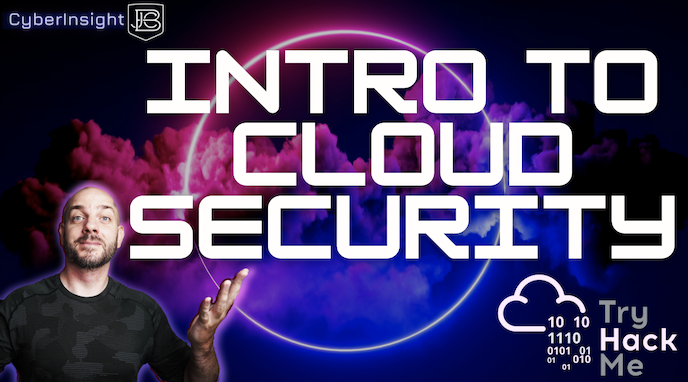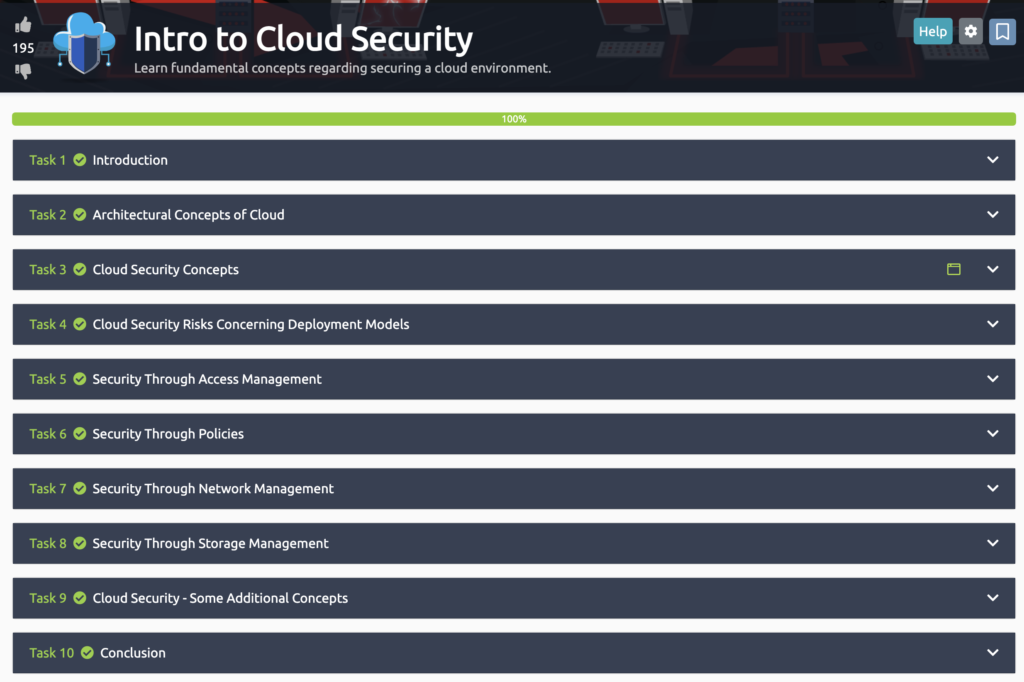Today we’re talking about one of TryHackMe’s latest room, Intro to Cloud Security! This room looks at the fundamental aspects of securing a cloud environment (and specifically through the lens of AWS). This is great information if you’re starting to learn about cloud technology or you need to brush up on a few things. If you’re interested in learning more about these topics, be sure to subscribe to the CyberInsight YouTube Channel to stay up to date on when I drop new cloud and cyber lab walkthroughs!
The room covers the following concepts:
- Architectural Concepts of Cloud
- Cloud Data Lifecycle and Security Concepts
- Cloud Deployment Model Security Risks
- Cloud Access Management
- AWS IAM Users, Groups, and Permission Policies
- AWS Identity, Resource, and Session Policies
- AWS Network Security and Network Access Controls
- AWS Storage Security and S3 Bucket Encryption
- Cloud Disaster Recovery, Logging, and Patch Management
In the above video, we started by covering the architectural concepts of cloud computing, including how cloud services are delivered, and the different deployment models available. From there, we dived into the cloud data lifecycle, exploring how data moves through your cloud environment and the different stages and risks of data processing.
Next, we examined some of the most significant cloud security risks, including data breaches, insider threats, and account hijacking. We discussed how to identify these risks and take steps to mitigate them.
Identity and access management are critical components of cloud security, and we explored the different methods for controlling user access to your cloud environment. We also looked at security policies and best practices for creating and enforcing them.
Network security is another essential aspect of cloud security, and we practiced how to secure your cloud network and prevent unauthorized access with network access control lists. We also examined data storage security and best practices for protecting data at rest.
Lastly, we talked about a few additional concepts. Disaster recovery is a crucial consideration in any cloud environment, and we covered how to develop a disaster recovery plan that ensures business continuity depending on your organizations objectives. We also examined logging and auditing, as well as the importance of software patching and vulnerability management.
Checkout other AWS and Azure lab videos here!
Network Knowledge Wrap Up
Keep an eye out as I continue to work through other TryHackMe rooms!
How to setup an AWS account walkthrough.


